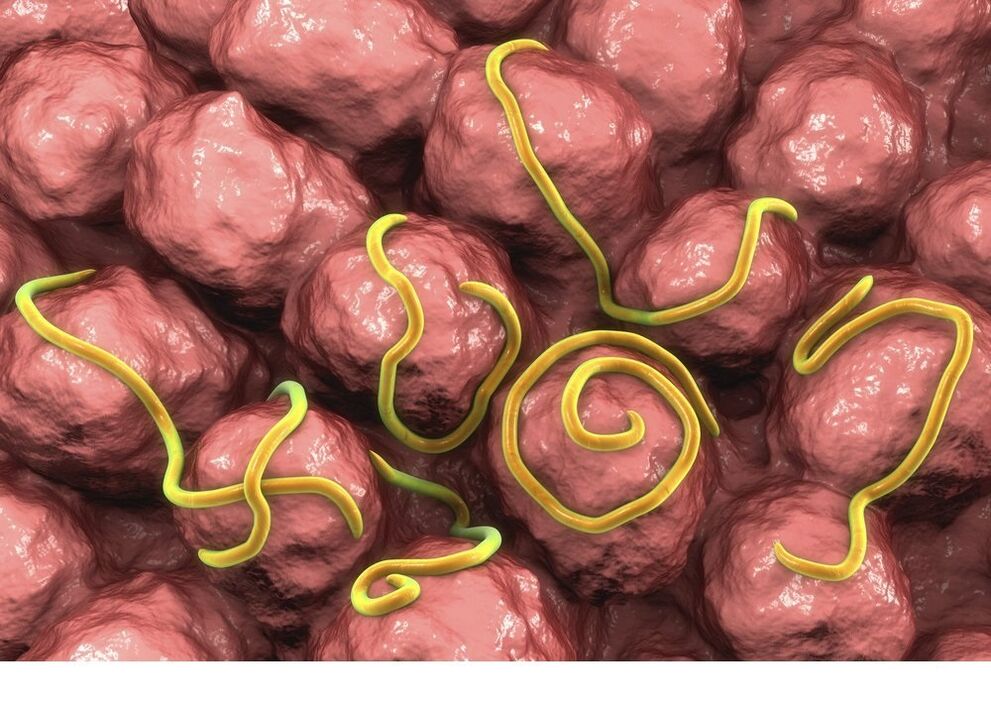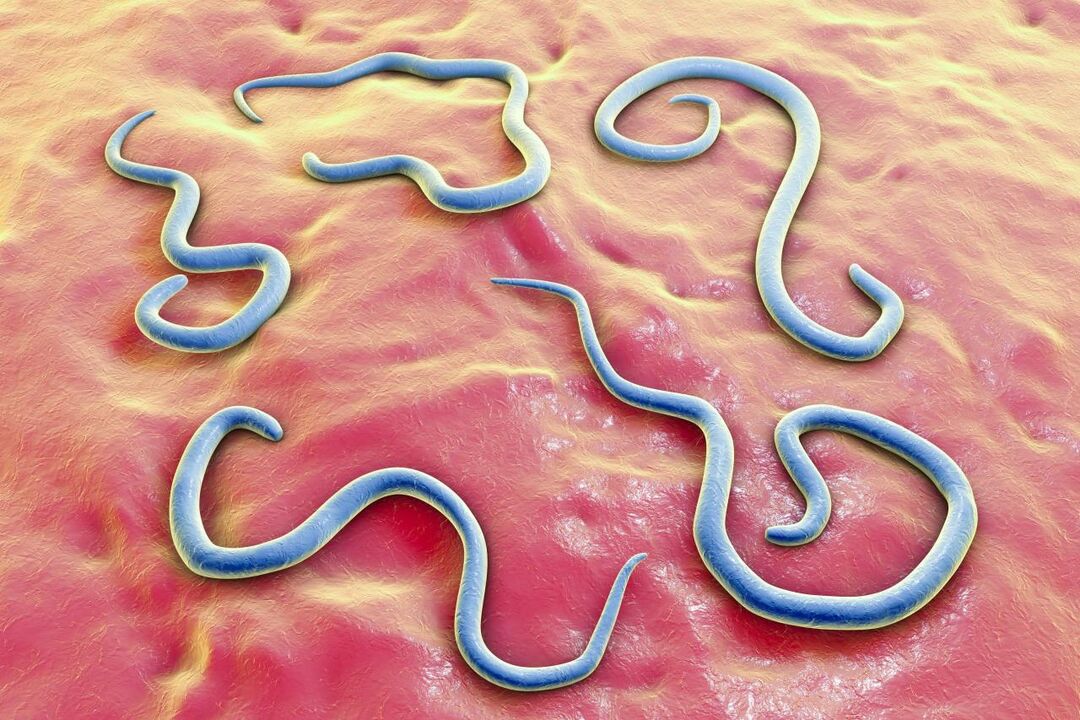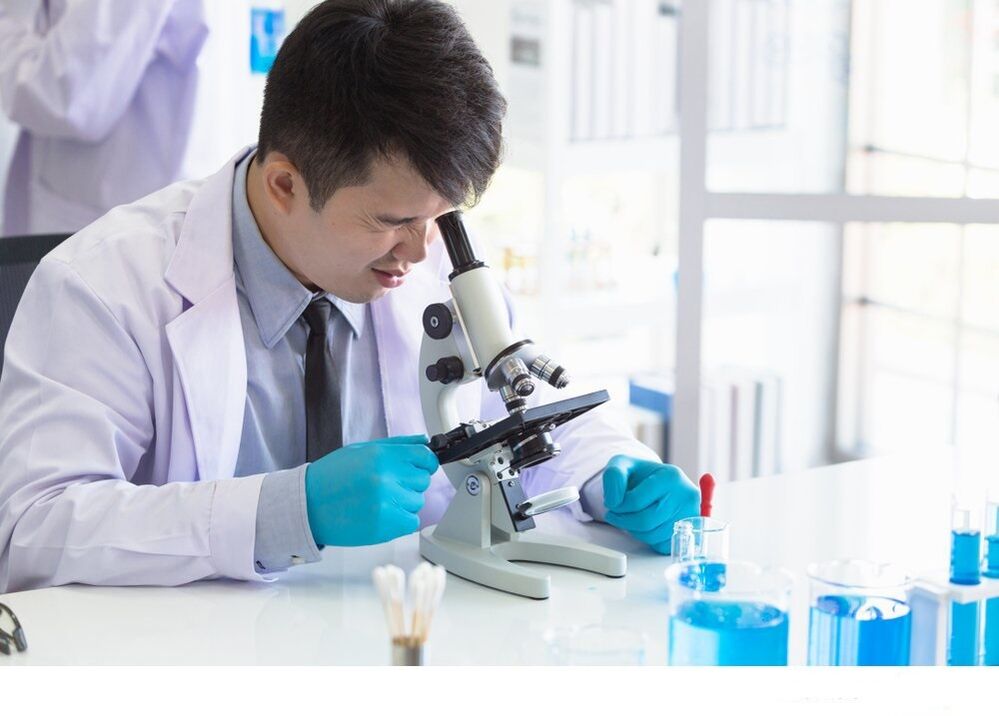Diseases caused by helminthiasis or helminths are one of the most common among humans. According to rough estimates from experts at the World Health Organization, one in four people on the planet is infected with one or another helminth. And that’s not surprising, because you can catch this infection almost anywhere in the world. Doctors equate the incidence of helminthiasis with the spread of influenza and ARVI.
Doctors estimate the extent of infection with worms in Hungary at 270 per 100, 000 inhabitants, but according to experts, the actual incidence is several times higher. This is due to the fact that one often does not even notice that an uninvited guest has settled in his body. If helminths do not appear in any way, the disease cannot be diagnosed for decades.
All about helmets
Parasitic worms, helminths or worms?
This huge group of living beings has multiple names at once. We first talk about parasites, that is, living organisms that live to the detriment of others. We are also talking about endoparasites, that is, we live inside another organism - in its tissues and organs. Finally, they are worm-like creatures that are ideally able to live in the body of an infected animal for a long time and reproduce efficiently.
Accordingly, helminths are parasitic worms. The term "helminths" was once introduced by Hippocrates. Among humans, these nasty creatures are also called worms - from the ancient Greek word, they mean only a parasitic worm.
So when it comes to helminths, we’re not going to be wrong in calling them worms or parasitic worms. And when we talk about helminthiasis, these diseases can also be called "parasitic infections. "
Various human worms

In total, scientists know about 287 types of helminths that can parasitize humans. Only 65 species have been identified in Hungary, and only 24 species are among the most common.
Helminths found in humans live throughout the body, and each species has its own preferences.
Basically, worms prefer the gastrointestinal tract and especially the small intestine, which contains ascaris, pinworms, three species of tapeworms, broad tapeworms, hookworms, and so on. You can find it.
Flukes, opisthorchis, etc. can be found in the liver, more specifically in the bile duct, and in the gallbladder. Trichinella affects muscles. The adult porcine tapeworm lives in the small intestine, and its larvae (cysticercus) are found in the eyes and central nervous system. Schistosomes (helminth samples from the tropics) prefer the veins of the gastrointestinal tract and urogenital system.
Filariae are usually ubiquitous — found in the lymphatic system and closed body cavities — in the retroperitoneal space, in the pericardial sac, and their larvae are usually found in the blood or skin.
Types of helminths in humans
Hem samples, the types of which are of most interest to physicians, are divided into two main types: flat and round (nematodes). The classification is based on the cross-section of the worm's body: in round worms it is circular and in flat worms it is flattened from the conditioned back to the conditioned abdomen. Flatworms are further divided into two classes: flukes (trematodes) and tapeworms (cestodes).
- Nematodes. Most nematodes are inhabited by human intestines. This group includes earthworms, pinworms, Trichinella, whipworms, etc. , Which differ greatly from each other - from a few millimeters to 1, 5 meters. Each has its own well-developed digestive system. The nematodes also have males and females. In adults, they are not difficult to distinguish: females are usually twice as large, and in males, the "tail" turns toward the "abdomen. "
- Trematodes. The body of trematodes resembles a leaf or a lancet and is not comparable in size to other helminth patterns: they are tiny worms, a few millimeters to 3, 5-5, 5 cm long. Unlike globular worms, trematodes have a pair of suction mouths in the mouth and abdomen. Their digestive system is in its infancy. A significant proportion of species from this group are hermaphrodites, i. e. , they combine characteristics of both sexes. An exception is schistosomes, which have both men and women.
- Cestodes. Cestodes are worms that are long, short strips with a head with hooks and suckers at one end. These worms live exclusively in the small intestine - their whole body does not fit into other organs. And this is not surprising, because the length of tapeworms can reach 10-11 meters. They have no need for the digestive system at all as they absorb everything they need from the food consumed by man. All tapeworms are hermaphrodites.
The organism in which the helminths live at the larval stage is an intermediate host (animals, fish, molluscs and, of course, humans) and the carrier of the adult forms is the final host.
Depending on whether a particular type of worm is in the developmental stage in the body of the intermediate host, they also speak of bio- and geohelminthiasis.
- Geohelm samples do not have such a section. The eggs of the worms fall into the ground where they wait until they are placed in the body of the prospective owner by the will of fate. Geohelminths include whipworms, roundworms, hookworms, and so on.
- Biohelm samples have such a section and can have multiple hosts. Examples include Trichinella, tapeworms, schistosomes, all flatworms, and the like.
Some scientists distinguish a third group of worms through the transmission mechanism - infectious helminths, which include pinworms (geohelm samples) and dwarf tapeworms (biohelm samples). These parasites are spread through contact with an infected person.
In addition, depending on which host plays a key role in the life of helminth samples, anthroponoses and zoonoses are isolated.
- The first category includes helminthiasis, in which a person's life stage is mandatory: ascariasis, enterobiasis, and so on.
- Zoonoses include helminthiasis, the pathogens of which can successfully exist without a person, yet our species are also susceptible to them, and if an infection does occur, the worms will not affect life and well-being. This category includes opisthorchiasis, diphyllobothriasis, etc.
How does helminth infection occur?
Most often, people become infected with worms, so to speak, orally, that is, they swallow helminth eggs. The most striking example is pinworms, whose eggs can be picked up by a child in a sandpit (a contact-household way of spreading the infection). The food pathway (through food) is typical of roundworms - through contaminated vegetables or fruits and trematodes that enter the body when consuming contaminated but poorly heat-treated seafood or meat.
However, food is not the only route of helminth infection. Eggs can enter the human body by inhalation of dust. And hookworms and schistosomes enter the body through the skin - and these are called infectious worms, and the route of infection is percutaneous. And because the schistosoma can be taken up while swimming in a lake, this route of infection is also called a waterway.
In the tropics, the filamentous plant lives, which is also the wuchereria, which is spread by mosquito bites. And this is the vector-mediated pathway of infection transmission.
Infection with helminth samples can also occur through contact with animals - infected cats and dogs. Usually people get roundworms (toxocar, etc. ) and tapeworms from animals. Pets carry helminth eggs through their fur during licking. A person who strokes such an animal and does not wash his hands immediately runs the risk of getting an infection in his mouth. Another option for worm infection is to clean the litter box without gloves.
How do helminths affect the body?

Mechanical collision
This category includes all activities of helminth samples in which the integrity of the tissues of the host tissue is compromised. For example, adult helmets with hooks and suction cups are fixed with their help while damaging the gastrointestinal mucosa. As a result, tissue erosion develops in the area where the worm is located, ulcers form, and the feeding process of the mucosa is interrupted, which can even lead to death (necrosis).
Passing through the body, so-called migrating larvae can also cause bleeding and inflammation in the affected areas - making it easier for them to penetrate deep tissue. Intestinal worms often provoke the development of appendicitis, intestinal obstruction, and even its rupture.
Eventually, the cysticercus, which has entered the brain and is actively growing there, compresses the tissues, which can lead to the death of a person.
Malnutrition of the host
First, the helminths themselves "rob" their caterers, consuming the food they eat. Second, some human helminths themselves feed on blood — this is what hookworms and whipworms do, or they take in the substances needed to form blood. Therefore, anemia can develop in the background of a parasitic infection.
Prolonged chronic infection with helminth samples that absorb valuable nutrients in metabolism is diagnosed with protein-calorie deficiency.
Poisoning the human body with helminth toxins
The metabolites of whipworm and tapeworm kill erythrocytes, and ascaris secretions cause capillary dilation and consequent bleeding.
After the death of some parasitic worms, it poses an increased risk, releasing substances with necrotic and hemotoxic properties.
Allergy to helminth proteins
Helmamples are foreign to us, so our bodies perceive many of the proteins they select (during vital activity or after death) as potential hazards and may regard them as antigens. Sensitization to these antigens produces antibodies - immunoglobulins IgE and IgG-4. These antibodies, when in contact with mast cells, basophils, and eosinophils, kill them. At the same time, substances that cause allergic reactions (allergy mediators) are released - histamine, serotonin, heparin, etc.
Suppression of the body's defenses
The negative effects of helminths on the body may be indirect. As mentioned above, tapeworms in the small intestine can cause a decrease in stomach acidity. This, in turn, significantly reduces protection against the entry of pathogenic bacteria into the body.
Many helminths have an immunosuppressive ability, meaning they suppress the body's defenses, thus ensuring a long-term comfortable existence. It is an evolutionary adaptation acquired during adaptation to a narrowly defined host circle. But the suppression of the human immune system causes increased vulnerability to other infections and diseases.
Risk of cancer

Some chronic helminthiasis significantly increases the likelihood of cancer. During their vital activity, parasites destroy tissues and organs, thereby triggering the development of malignancies at this site. Cancer is often associated with opisthorchiasis, schistosomiasis, clonorchiasis, and so on.
Phases of the course of helminthiasis
What are the signs of helminthiasis? Once the worms enter the body, the symptoms of the infection depend on the phase of the disease.
There are four main stages in helminthiasis:
- Acute (early) phase of helminthiasis. At this stage, the pathogen of the infection enters the human body, leading to sensitization of the body to helminth proteins. The first symptoms of helminths appear 2 to 4 weeks after infection. Usually, allergic reactions develop during this period - itchy skin rash, conjunctivitis, cough, swollen lymph nodes, inflammatory processes in the joints, analyzes show increased concentrations of eosinophils, and so on.
- Latent phase. At this stage, helminth develops into adulthood and is finally defined by a permanent residence, after which helminthiasis enters a chronic stage.
- Chronic (late) phase. At this stage, adult helminths actively reproduce, producing tens and hundreds of thousands of eggs and larvae that enter the external environment or spread to other organs in the body. Children's helminths can cause muscle cramps, seizures - epileptic, hysterical, etc. More specifically, there are a number of helminths whose symptoms are very characteristic, but even they need to be checked using a number of tests.
- Exodus phase. This term means either complete healing of the patient or disability in the background of complications of helminthiasis. These include malignancies of opisthorchiasis and schistosomiasis, cirrhosis of the liver, and the like.
Helm samples: symptoms of infection

How the helminth invasion (invasion of the helminths body) affects the human body is determined by a number of factors: the mode of penetration, the extent of infection, the duration of the disease and the lifespan of the helminth, its characteristics are nutritional and developmental cycle.
In general, doctors distinguish between the following symptoms of helminth infection, in the presence of which you should consult your doctor and undergo an examination:
- intermittent frequent nausea and vomiting, abdominal pain;
- common allergies;
- sleep disorders, chronic fatigue, irritability;
- itching in the rectal area;
- common urinary tract infections;
- chronic gastrointestinal diseases, dysbiosis;
- symptoms of chronic intoxication of the body: frequent colds, blue circles under the eyes, pallor, enlarged lymph nodes;
- vulvovaginitis;
- increased levels of eosinophils in blood test results;
- delayed growth and weight.
The question arises: if the helminths are established in the body, will the symptoms of the infection be visible immediately or only after a while? Are there any helminths in which it is difficult to recognize signs of infection? Doctors point out that in the case of a non-intensive invasion, the first symptoms of helminthiasis may appear after a month or two and after a few years. That is, no signs of infection with helminth samples will be visible during this time.
Manifestations of helminth infection in children
Helmet samples are more common in children than in adults. This is due to a lack of hygiene skills as well as close contact with the environment, which can be a source of helminth eggs. Such an environment could be the sandbox of a playground, a bed in the grandmother’s dacha, someone else’s play that an infected child is playing, and so on.
What complaints are most often recorded when children are infected with intestinal nematodes:
- gastrointestinal dysfunction - 75% of children;
- allergic reactions - 71%;
- sleep disorders - 54%;
- appetite disorders - 44%;
- abdominal pain - 40%;
- itching in the anal area - 36%.
Less frequently, in the background of helminthic infection, children developed immune disorders (19%) and bruxism, i. e. gnashing of teeth (16%). Paradoxically, these two symptoms are generally seen by the population as signs of helminths.
Diagnosis of helminthiasis
What are the tests for helminth samples?

It should be understood that helminth analysis alone is not enough. None of the methods for detecting parasitic worms can serve as a basis for making a definitive diagnosis. According to doctors, in some cases a positive result can only be achieved 8-10 times! There can be many reasons for this: females lay eggs at different intervals that do not coincide with the sampling moments, biological samples were found to be empty because they were taken in the wrong place, the disease was at a stage that was almost impossible to determine by methods, and so on.
The most common types of analysis of helminth samples are examination of the feces of helminth eggs, perianal scraping, analysis of duodenal contents, analysis of biometers from the patient's lungs, blood testing for helminth samples, and so on.
Less frequently, urine is required for diagnosis (schistosomiasis of the urogenital system, enterobiasis), examination of the patient's muscle helminths (trichinosis) by biopsy.
How is feces examined in helminth samples?

50 g of patient stool (approximately 1 tablespoon) is sufficient for analysis of helminth samples. Today at the pharmacy you can buy a special clean container for tests where you need to collect feces for helminth eggs. It is better to give the sample to the laboratory on the same day (for strongyloidosis and ankylostomiasis - no later than 4 hours after collection). If necessary, the faecal sample of helminth samples can be stored at 0–4 ° C for up to one day, it is completely impossible to freeze. In principle, it is possible to use special preservatives that allow the samples to be stored for up to several months.
Perianal scraping - analysis of helminth eggs
Perianal scraping is used to diagnose helminthiasis such as enterobiasis, teniasis, teniarinchiasis, and the like. Unlike the fecal analysis of helminths, the scraping material is collected from the skin around the anus with a cotton swab, wooden spatula, glass eye stick, or adhesive tape. The material collection procedure for the analysis of helminth oocytes is performed early in the morning and the patient should not wash either in the evening or in the morning.
Importantly, even this type of re-analysis of helminths does not guarantee the reliability of the result in enterobiasis. Female male worms lay eggs at regular intervals, and if you don’t reach the "right moment, " you can be sure there are no eggs - no worms.
Analysis of duodenal contents (bile)
Bile is collected using an empty gastric tube. Because this method is invasive (unlike methods such as fecal specimen feces, urine collection, and perianal scraping), it is only prescribed for strict indications if there is a well-founded suspicion of a particular helminthiasis. Bile is examined for strongyloides and hookworm larvae, and parts of the bile are also analyzed for the presence of helminths living in the pancreas and liver ducts.
Blood test for helminths

In addition to the above methods, there are also so-called serological methods for diagnosing helminthiasis. In this case, a blood test is performed on the helminths, more specifically the antibodies against them.
The main serological method today is the enzyme-linked immunosorbent assay (ELISA), which is characterized by high specificity and the highest sensitivity (90%) of all other methods. That is, it allows you to pinpoint exactly what kind of helminths a person is infected with and allows them to be detected, even if there are very few of them. The reliability of the ELISA is 60%. ELISA is extremely relevant in the detection of so-called tissue helminthiasis, in which worms parasitize within the patient's organs and tissues (trichinosis, toxocariasis).
Instrumental methods for the diagnosis of helminths
With the above methods of laboratory diagnosis, including immunological analysis methods, helminths are far from always detectable. Some parasitic worms have dense capsules that are resistant to external influences. They can also invade tissues that are protected to some extent from inflammatory reactions in the body, such as the spinal cord. Certain types of worms have their own means of protection - antienzymes. Worms that are able to reproduce sexually exchange genetic information. Given the rate of reproduction and regeneration of generations, it is not surprising that such helminths will become less vulnerable to means of detecting and treating parasitic infections over time.
If the analysis of the faeces of helminths, blood and other methods gave no effect, in this case such parasites could be examined by means of instrumental diagnostics - X-ray, ultrasound, computed tomography, etc. spleen, enlargement of the latter lymph nodes, and finally in some cases - echinococcus, large groups of tangles-tangles - the parasites themselves can be seen.
Treatment of helminthiasis
Traditional medicine has discovered through experiments and errors many anthelmintic plants: poplar, pumpkin, chamomile, tansy, male fern, and so on. effect:
- cucurbitin (pumpkin seeds);
- artemisinin annual wormwood);
- ascaridol (ambrosia);
- santonin (citrine wormwood);
- thymol (thyme);
- pelletierin (pomegranate root);
- carvacrol (oregano, thyme, bergamot);
- diospyrrole (persimmon);
- arecoline (arec palm);
- pyrethrins (Dalmatian chamomile);
- tremulacin (poplar);
- nicotine (tobacco) and its isomeric anabazine (tobacco and leafless brown);
- emetin (emetic root).
And today, a significant portion of anthelmintic drugs contain the same active ingredients that once provided the anthelmintic effect of decoctions and tinctures.
conclusions
- Helminthiasis is one of the most common diseases in the world. Any human and animal living in its environment with a 100% probability of being infected with helminths.
- But if there are few individuals in the body and the body itself is generally healthy, the disease can be asymptomatic for many years without any manifestation.
- Even a regular medical examination every 3 years or once a year does not guarantee that a person really does not have worms.
- The signs of worms in the body can be very similar to the symptoms of other diseases. Therefore, if the treatment of intestinal diseases and other similar pathologies does not help permanently for some reason, you should consider performing helminth tests.
- According to the results of one analysis of helminths, the diagnosis of helminthiasis is not made because both false positive and false negative results are possible. You should not be randomized on your own - it is better to see a doctor: based on the combination of symptoms, nutritional data and travel data, you choose tests that allow you to know exactly whether a person has worms or not.
- You cannot prescribe tablets on helminths on your own. Anthelmintics can be contraindicated for a particular patient and can cause serious damage if misused.






































